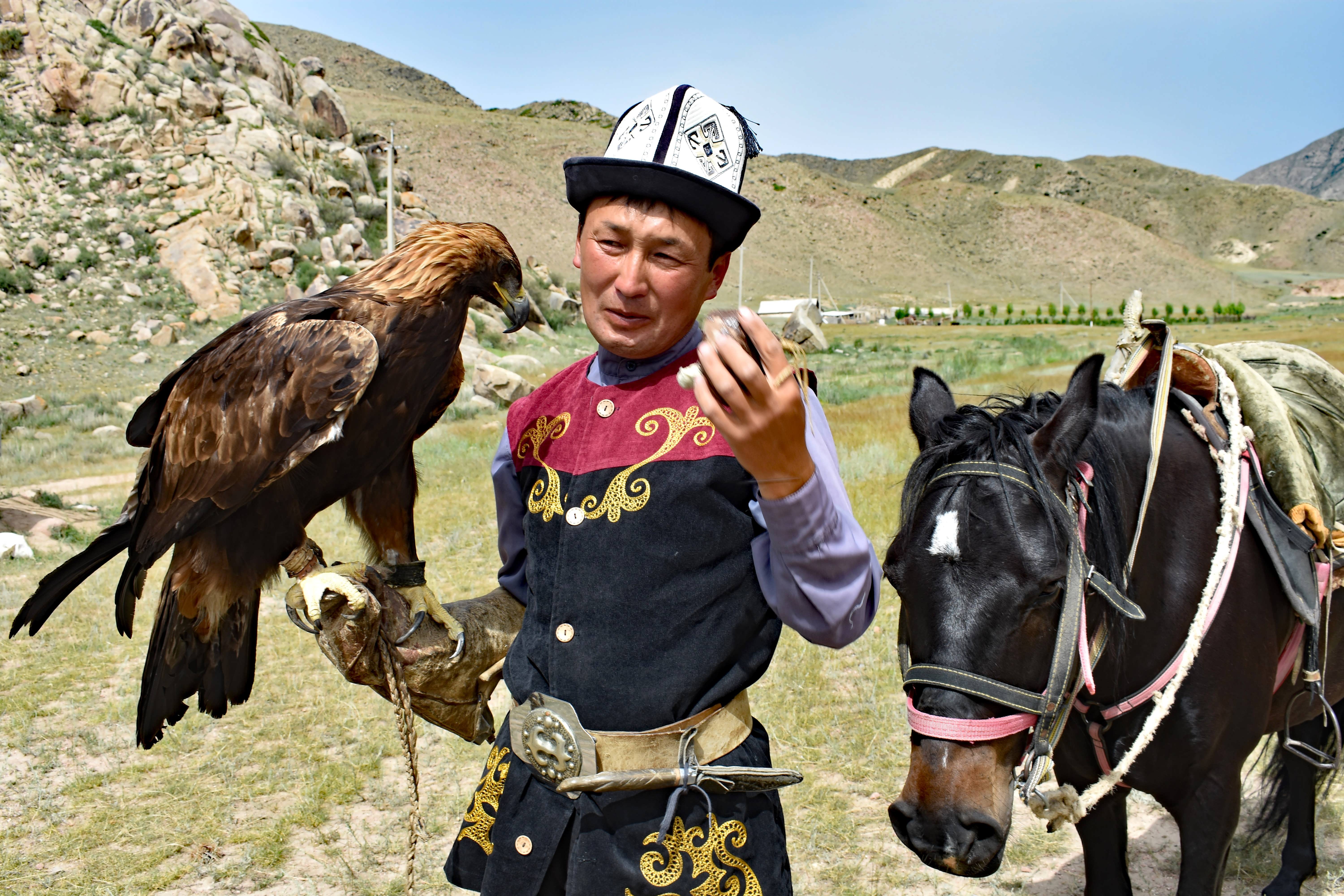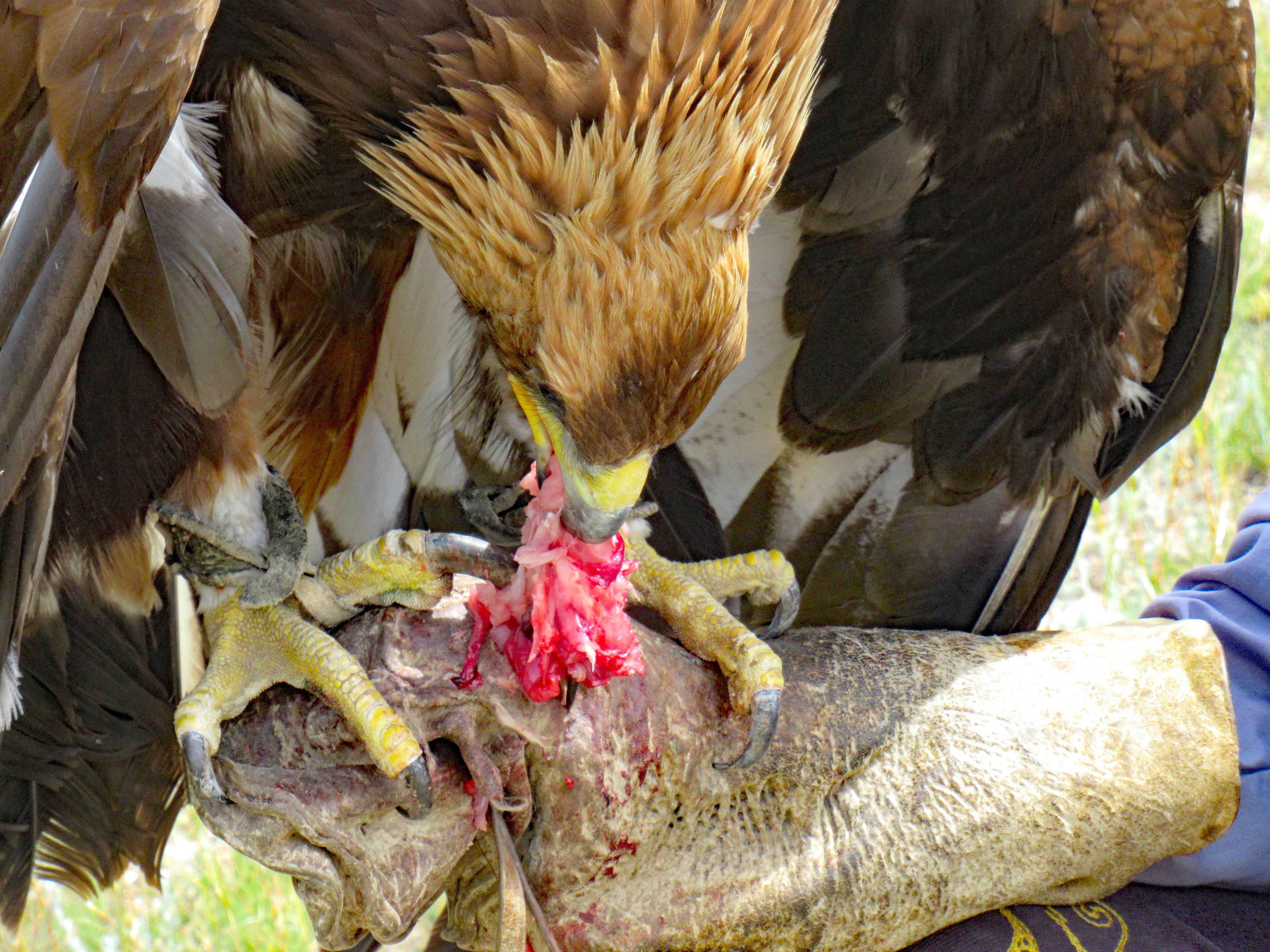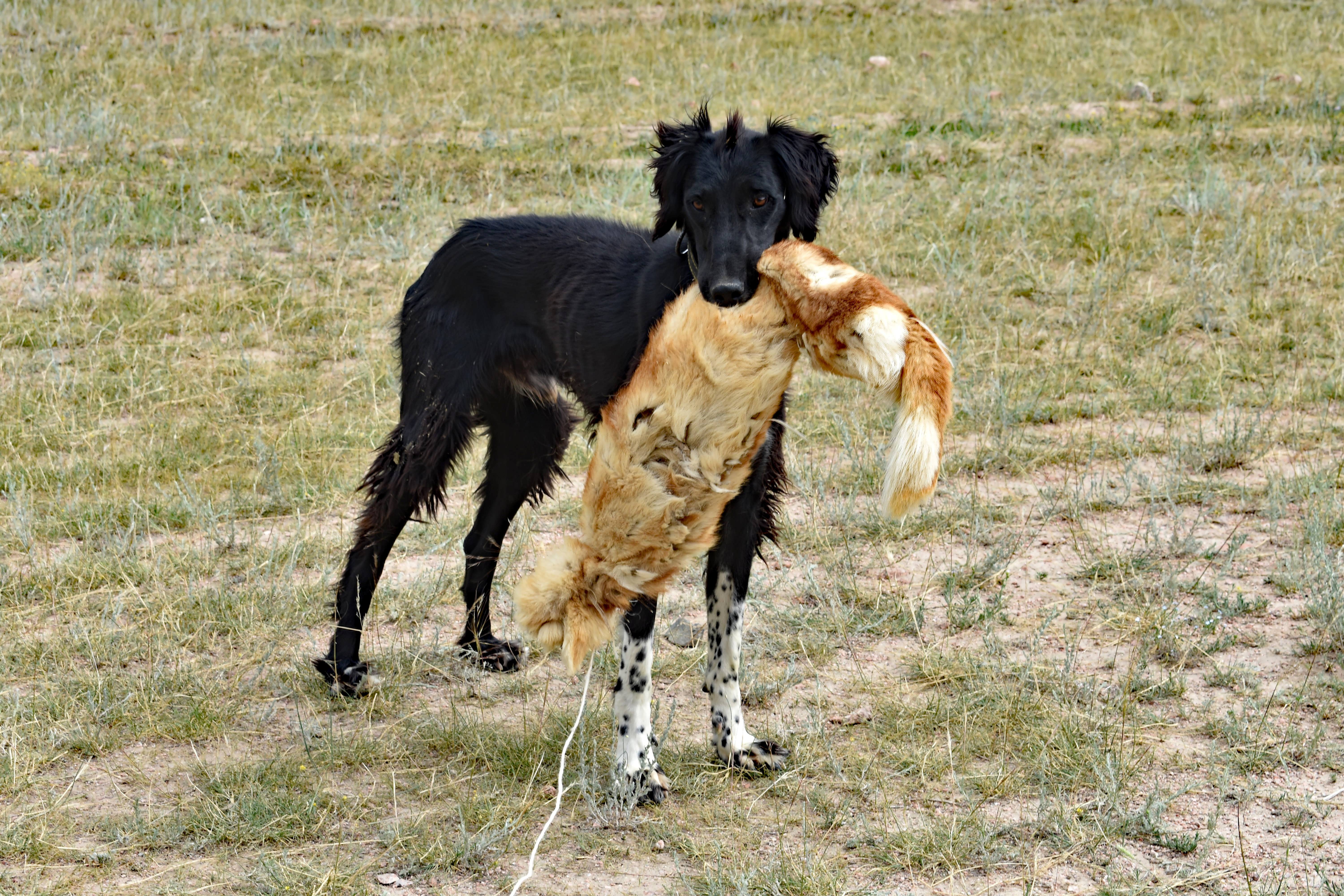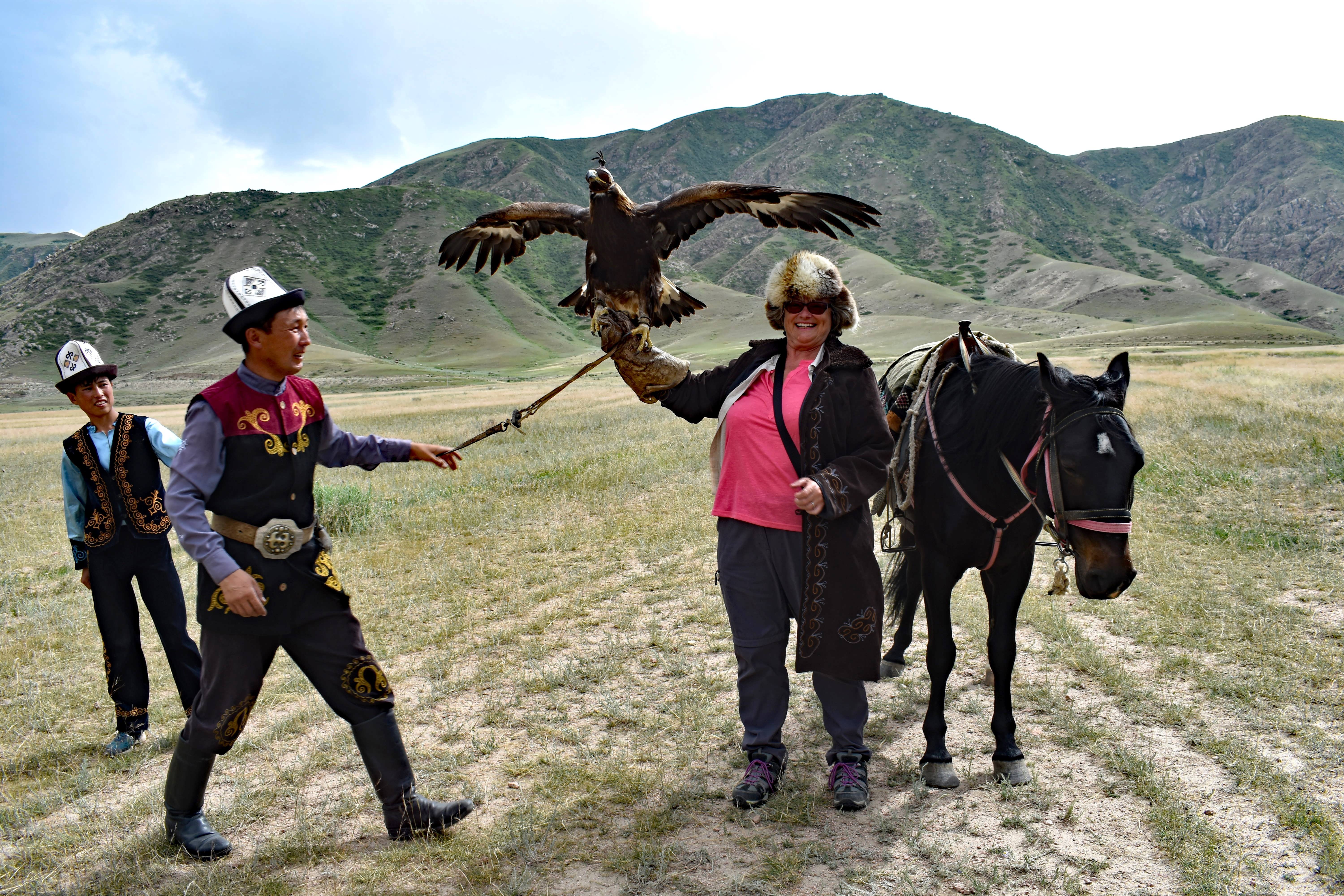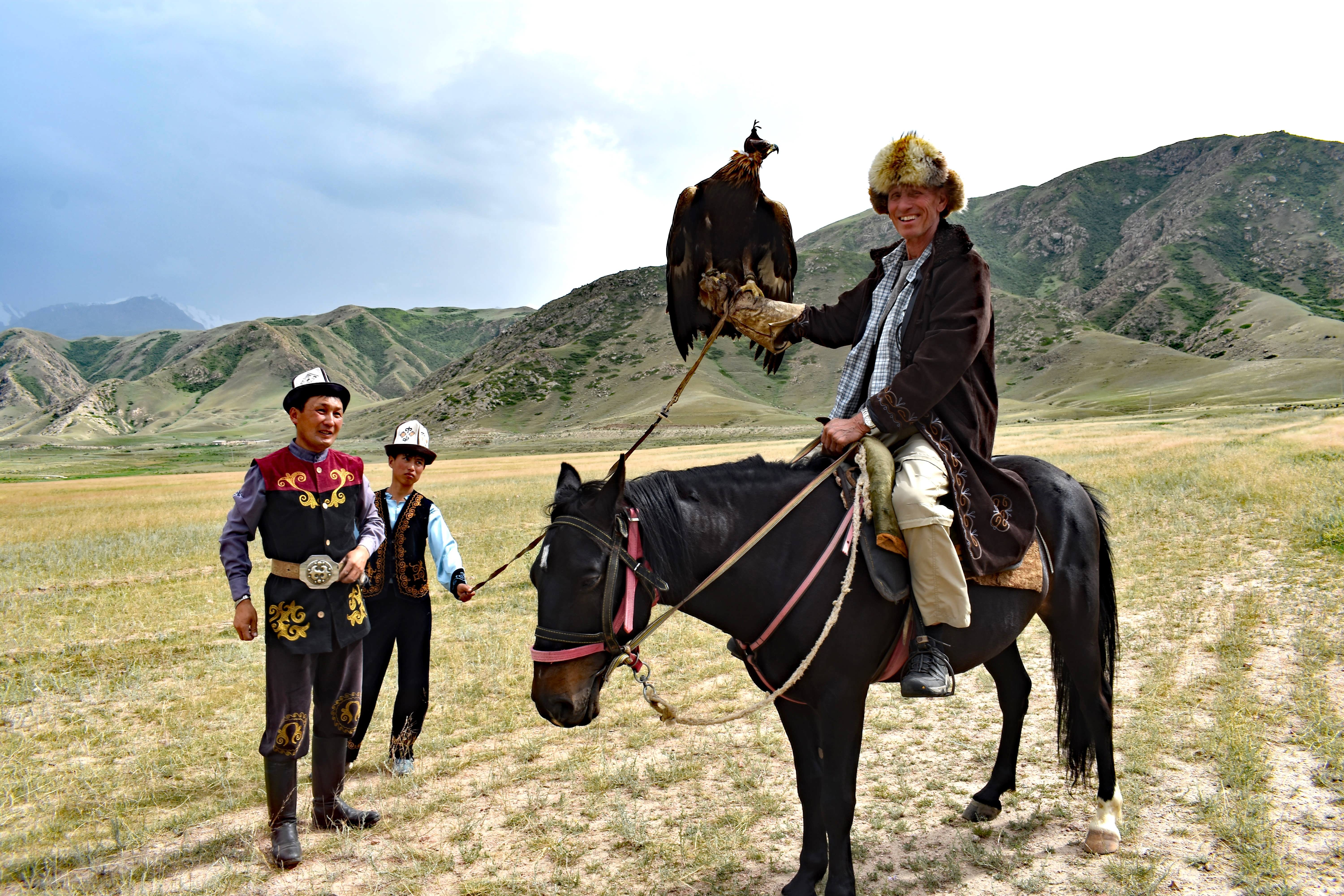Bokonbaevo, a small Kyrgyzstan village, provided what was the highlight of our five-week tour of Central Asia.
The ancient tradition of eagle hunting was once widespread amongst nomadic cultures when eagles were trained to kill hares and foxes which provided fur and meat in the cold winter months. As the training and care for the eagles is costly and time consuming, the art is slowly disappearing, so we were very excited to meet Ruslan, and his two golden eagles named Karakys and Karachin.
With our guide interpreting, Ruslan told us all about his birds, including their age, weight and wingspan and how their feathers change colour with age. He demonstrated the use of the hood to cover their head which helps to calm them down as their eyes are also open, although they cannot see in the dark.
The birds can be trained anytime up to five years of age with Ruslan explaining that one of his birds had been taken from the nest, as the villagers didn’t want the birds to kill their sheep. They are trained not to kill domestic animals and can eat up to 1kg, but then it will not eat for a week.
Having learned about the hunting season and what and how they hunt (the prey must be moving), it was time for the demonstration.
Ruslan was resplendent in leather trousers and waistcoat with gold embroidery and a belt with a huge circular buckle. He wore the traditional Kyrgyz Ak-kalpak, the white felt hat said to resemble the country’s snow-capped peaks, and donned his well-worn glove made from leather with a felt inner. Whilst Ruslan had been speaking, we’d not spotted his young assistant climb a mountain with the second bird. I’d been slightly worried that live animals were going to be used in the demonstration, so was relieved when Ruslan took out a fox pelt, got on his horse and cantered off. The bird was released from the mountain, and as they can see within a 3km radius, it quickly spotted and caught the pelt and was rewarded with a treat of meat, complete with bones and fur.
In the second demonstration the bird was released and as there was no food, Ruslan was able to call the bird, which landed on his outstretched arm.
Two Taigan sighthound dogs were released from a van, which we were told hunt for fun not to eat. Ruslan once again mounted his horse and galloped off with the pelt. The dogs hared after him, as they can run up to 60mph.
We were invited to don a fox fur hat, long leather coat and the hunting glove before being asked if we wanted to get on the horse for photos. I said my husband would volunteer for the horse part, and he mounted with aplomb. Ruslan showed us how to rock our arm back and forth to make the bird open and shut its wings. As it weighed around 5kg, it made us realise how strong Ruslan was, in that he had held the eagle all the time he was talking to us and not just the few minutes it took for us to take our souvenir photos.
It was clear from our experience that Ruslan had formed a huge attachment to his eagles, and it was therefore a surprise to learn that the birds are released into the wild after 15 years to mate.
